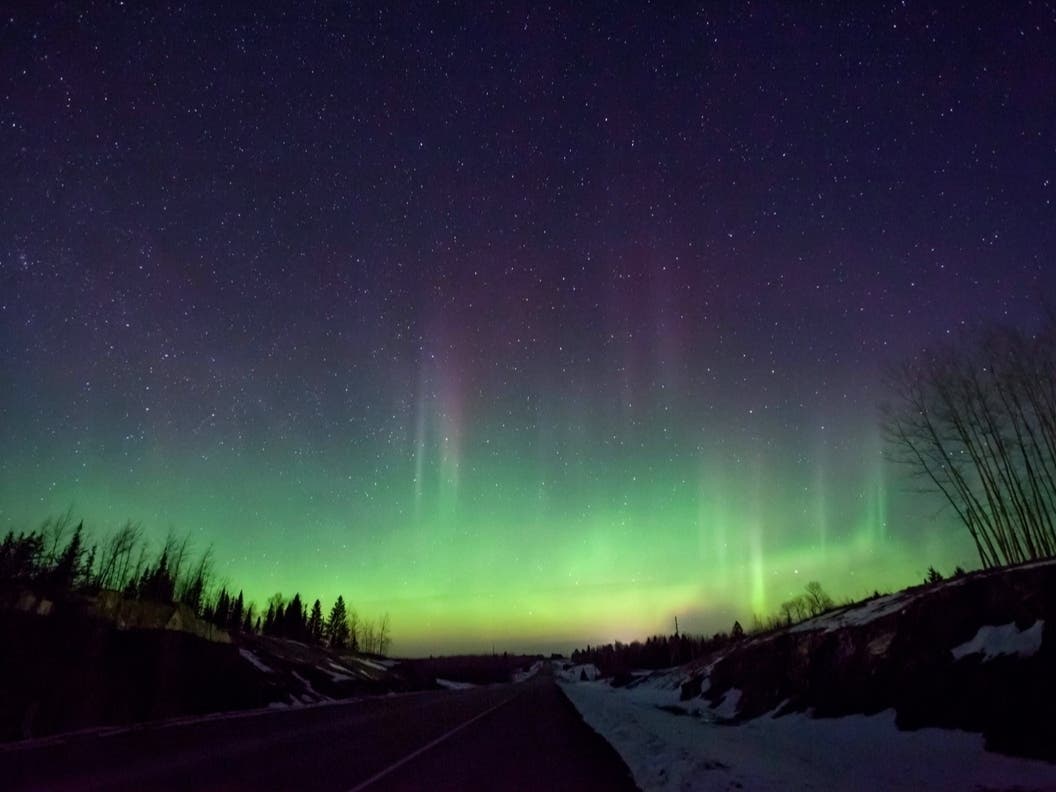Community Corner
Aurora Borealis Hunting: What’s A Kp Index; More Northern Lights Tips
Aurora displays are likely as sunspot activity increases and we near the period known as the "solar maximum." They're elusive, though.

ACROSS AMERICA — The aurora borealis — or northern lights, as some people call them — are as elusive as they are dramatic, and seeing them without having to travel to Norway or Swedish Lapland is on many Americans’ bucket lists.
They lack the reliability of meteor showers, supermoons and other celestial events, but this is a particularly active time for the solar storms that produce northern lights displays.
That’s because we’re midway through an 11-year cycle in which the sun's magnetic fields flip polarity — and that means the northern lights could dance more often in the next decade or so.
Find out what's happening in Across Americawith free, real-time updates from Patch.
Northern lights displays are never guaranteed, of course, and they're a treat that people south of the nation's midsection rarely if ever experience in person. But the chances increase as the 11-year solar cycle enters what's known as "solar maximum," when sunspot activity increases. Aurora experts say the busy season for sunspots should peak between 2023 and 2028.
Here are some tips to increase your odds of seeing the northern lights if aurora hunting is on your bucket list:
Find out what's happening in Across Americawith free, real-time updates from Patch.
Know What Causes Northern Lights
It starts with a blistering hot sun, whose surface is about 6,000 degrees Fahrenheit, but whose atmosphere, or corona, is about a thousand times hotter — so hot the sun’s gravity can’t hold it in place.
Because of that, the sun ejects a continuous stream of plasma — charged particles of electrons and protons known as a coronal mass ejection (CME) carried by solar wind. At a temperature of about 1.8 million degrees Fahrenheit, it flows outward through the solar system at speeds as high as 900 kilometers per second.
Solar wind is what blows the tails of comets around, and it’s visible as a halo around the sun during an eclipse. When solar winds are directed toward Earth, the CMEs collide with the gasses in Earth’s upper atmosphere in what’s called a geomagnetic storm, creating the potential for aurora displays.
It’s more complicated than that. For anyone who wants a deeper understanding, The Conversation has an easily understood explanation of the relationship between charged solar particles and auroras, and the role of magnetic reconnection.
Aurora Forecasting Sites To Know
Timing is everything. If a solar storm is happening one day, the solar wind could reach Earth’s atmosphere within 20 hours.
Bookmark the Space Weather Office website. The National Oceanic and Atmospheric Administration puts out a 27-day aurora forecast every Monday.
- You Might Also Like: 2022 Guide To Meteor Showers, Supermoons, Other Celestial Events
NOAA’s Space Weather Prediction Center puts out a three-day forecast based on current geomagnetic storm activity.
What To Know About The Kp Index
The auroral strength is measured by the Kp index, according to the Space Weather Prediction Center. In general, the chances of seeing the lights are best with a Kp index of at least 5, The Washington Post wrote in a story about aurora borealis tourism. Be sure to check out that story.
With a Kp index of 9, the auroras can be seen as far south as St. Louis, Missouri.
- You Might Also Like: Rare Planetary Alignment, Electric Blue Clouds Coming Up
But even with a Kp index of 5 or greater, aurora hunters may be disappointed. For the best bets, when the aurora forecast looks promising after a geomagnetic storm, check the weather forecast for clear skies and book a flight to places such as Alaska, northern Minnesota or Michigan, or practically anywhere in Canada’s Northwest Territories.
Get more local news delivered straight to your inbox. Sign up for free Patch newsletters and alerts.